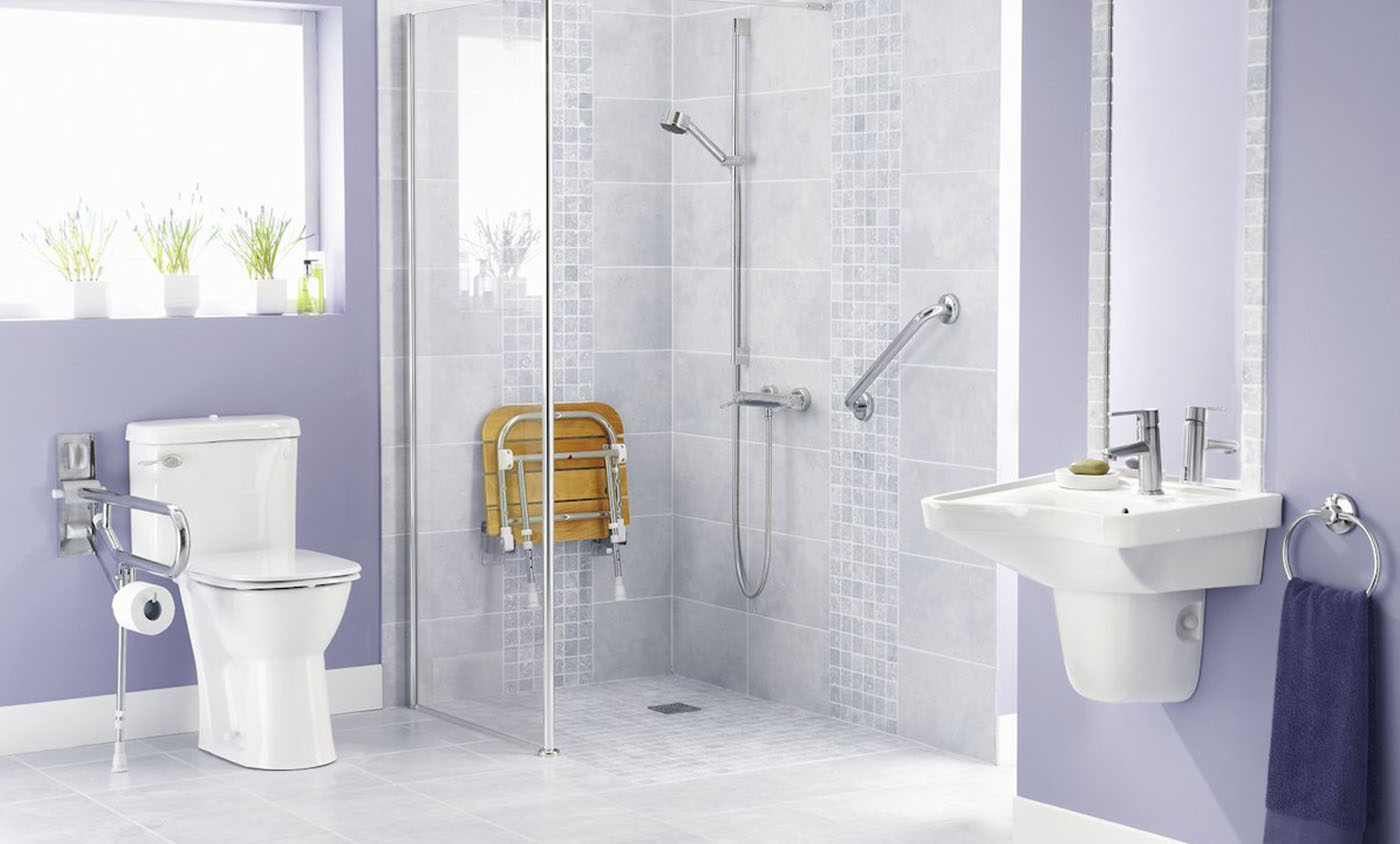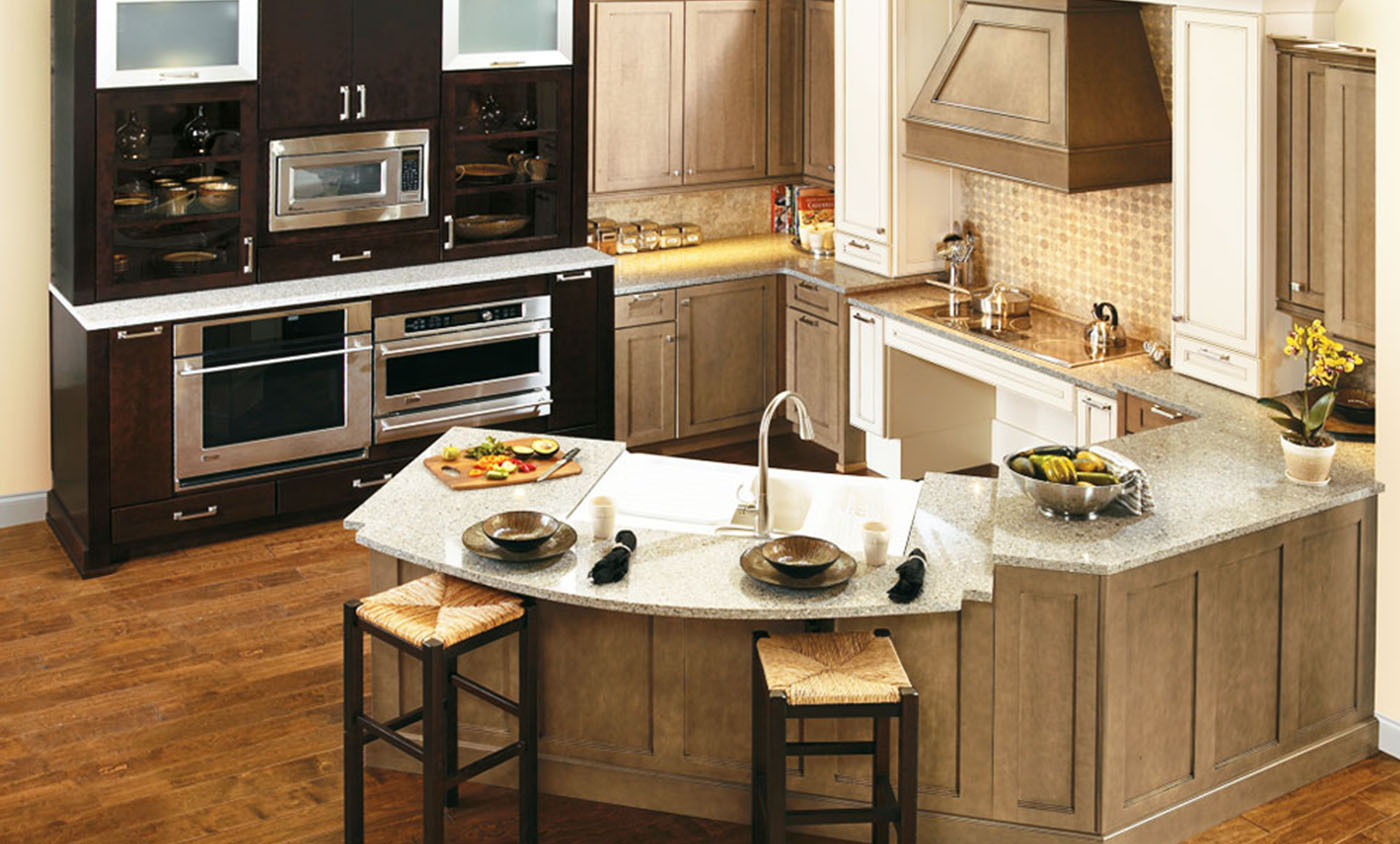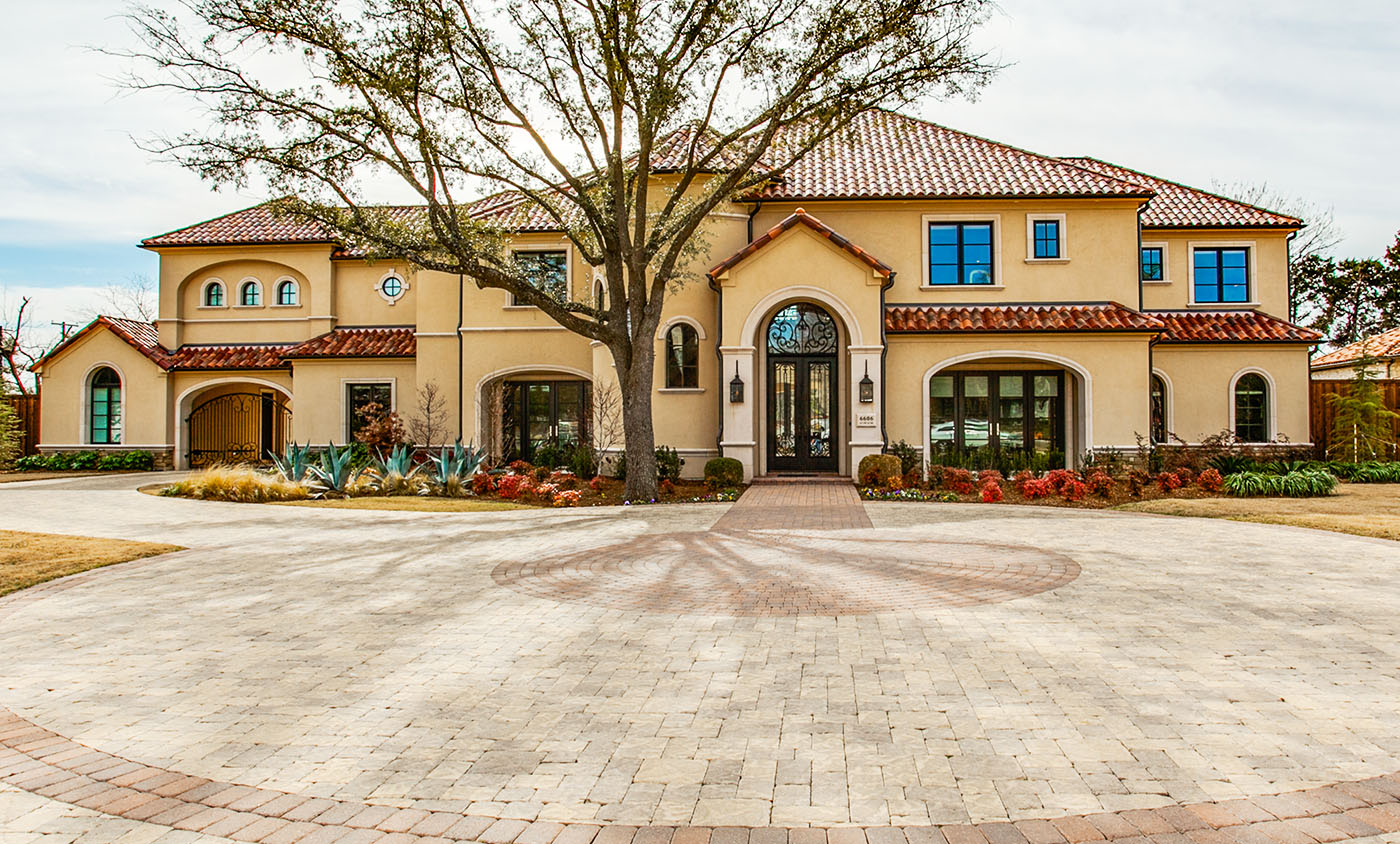Bathroom Ideas for Aging in Place
Since we spend so much of our time in the bathroom, it is only logical that the aging in place ideas you implement should include this space. Of course, safety is the most important thing to keep in mind when considering a bathroom remodel.
Location
At least one full bathroom should be located on the main level of the home (along with the bedroom, kitchen, common areas and laundry room). If there is not a bathroom on the main floor of the home, you may wish to consider remodeling to add an additional bathroom or install a chair lift or elevator for easy access to other levels.
If you also use another bathroom, you should consider also making the changes below (or similar) to them.
Space to Move
If you are remodeling your bathroom, keep in mind that space will be a greater issue as you age. As you transition from mid-life to senior to elderly, planning for the use of canes, wheelchairs, walkers or similar assistive devices is a good idea. The ideal situation would be to have plenty of clear space to accommodate someone in a wheelchair around the toilet, bathtub or shower stalls and areas around cabinets and closets.
Toilets
Having the toilet at the proper height can make an incredible difference in the comfort and safety of your bathroom. Two of the most common options for achieving this are replacing the toilet with one that is the proper height or buying a seat extender. The latter is the most economical way and can be purchased at a local home health care store. If you are remodeling the bathroom and wish to replace the existing toilet, please keep in mind the right toilet needs to be selected for the people who will be using it and the height should be properly adjusted. Also, depending on a person’s height and abilities, a handicap accessible toilet could create more issues than the toilet being too short.
Other items you may wish to keep in mind:
- Consider installing a toilet paper holder that is designed for one-handed changing
- Ensure the toilet paper holder can be reached from a sitting position
- A toilet/bidet combination could significantly improve hygiene. So, if you are replacing the toilet, you may wish to consider that as an alternative.
Grab Bars in Bathrooms
Installing grab bars can dramatically and economically increase safety in the bathroom. (They also can be helpful in bedrooms, hallways or any other place where standing or walking assistance is needed.) At the toilet, grab bars can help with sitting and standing. In the tub or shower, they can help a person to stand (or stay standing) and safely get in and out of the shower. Consider several installed on the interior and exterior of the shower (or tub).
Typically, when people think of grab bars, they typically think of something that looks like it belongs in a hospital (cold and metal). Today, you can find grab bars in a variety of styles and colors to match your decor and taste.
Other items you may wish to keep in mind:
- If you are thinking about remodeling your bathroom, you might want to go ahead and install bracing in walls around tub, shower, shower seat and toilet even if you do not plan on installing grab bars now. This will get the walls prepared to support the grab bars when you are ready and keep you from additional remodeling later.
- Typically, grab bars need to support 250 – 300 pounds.
- For best results, grab bars should should have a texture to them for easy gripping.

Bathtubs and Showers
Most homes in America have bathtubs that are not accessible. This presents a very big safety issue for people who wish to age in place. For a standard tub there are several things you can do to make it safer for an elderly person. Installing grab bars, shower seats and applying an anti-slip coating to the tub floor are three reasonably priced options. Bathtubs also can be modified to create a safer way to enter the tub, which may be more inexpensive than replacing the tub. There are also a wide variety of walk-in tubs on the market that can replace your existing tub.
For showers, the most accessible option is a roll-in shower. This is a shower stall that has an curb-less entrance and the door (or opening) is a minimum of 36 inches wide. This would allow access for a wheelchair at some point and gives those who walk into the shower plenty of room to maneuver.
Adjustable Shower Heads
An adjustable shower head (which moves to suit the height and position most comfortable for a user) is a great way to add accessibility to a bathroom. Combining it with a hand-held shower head creates an even more functional experience. Using these two in conjunction with a shower seat will make it much easier to bathe, while providing an increased level of safety.
Shower Seats
Adding a shower seat can relieve the strain experienced with standing for extended periods of time. These seats allow a person to safely shower and lessen the chance of falling. There are many types to choose from, a few being shower stools, shower chairs, retractable (or fold-up) seats. As well as, built-in seats.
For overall bathing safety and usability, you may want to think about these options:
- Have the tub and shower water controls closer to the entry-point so they can be reached from outside the tub/shower area
- Install lever handle faucets
- Have a shelf installed in the tub/shower area for soap, shampoo and towels
- Install or purchase a shower or tub seat
- Have the water pressure controlled (a good idea for the sink as well) and install anti-scald controls
- Add a light in the shower stall if there is not one

Sinks
In order to prepare for the greatest usability, consider a wheelchair accessible sink that is hung on the wall, providing space for your knees (or wheelchair) underneath a pipe-covering panel to protect user’s legs. One of the easiest things to do to make the bathroom more accessible is installing lever handle faucets. You also might like to know that there are faucets that are pedal controlled. Both of these allow people of almost all abilities to more easily turn the faucets on and off, and are particularly helpful for people that have arthritis or other issues with gripping or bending their hands. For safety, consider having all water pressure controlled and install anti-scald controls to prevent burns.
Cabinets and Counters
It never seems to fail that you always need more storage space. If you are planning to remodel your bathroom, make sure to include as much storage space as you can. You might want to consider installing adjustable height (or varying height) counter tops with provisions for roll-under access in front of the sink and main counter top so someone can access the counter top and mirror easily.
A few other things to consider:
- Install a contrasting edge color on counter tops. This will help anyone who has diminishing eyesight and/or balance issues feel more at ease and help reduce accidents.
- Make sure there is plenty of counter space. Not only does this help you cut down on the clutter, it also will prepare the bathroom area for future space needs in caring for someone.
- No sharp edges! For safety, you should make sure the counter’s edge is rounded. This will help curb cuts and bruises should someone fall against it.
- Where is the medicine cabinet? It is very handy to be able to reach it while you are sitting down. If you have someone who cannot get around very easily, or are in a wheelchair, this could be particularly helpful.
- Tilting mirrors. For practical purposes, having a mirror that tilts up and down makes using it easier. Again, especially if someone will be using it in a sitting position or has a diminished stature.
Flooring in Bathrooms
This may seem incredibly obvious, but the bathroom should be free of slippery walking surfaces. For safety sake this is essential, particularly directly inside and outside of the shower and/or bathtub area. For the flooring and shower stall, consider anti-skid tile. If a tub remains, you should have an anti-skid coating put on the bottom of the tub.
Throw Rugs
It is a surprise to many people that throw rugs are a major cause of tripping and falling in the home. If you must have rugs in the bathroom (or anywhere for that matter), purchase a rug with a low pile and secure it with anti-slip rug tape found at most major home improvement stores. However, it is recommended that you remove them from the bathroom entirely.
Miscellaneous
There always are those items that come up that you’d wish you’d thought of before they became an issue. Here are a few tidbits listed below.
- Make sure the bathroom door can be unlocked from the outside.
- Replace the door knob with a lever handle. (This applies to all doors, actually.)
- For accessibility, bathroom doors should open out, not in. Pocket doors can also increase the space inside the bathroom.
- Install a phone in the bathroom that can be reached from the toilet and the shower/tub area. Cordless phones are easy to add.





